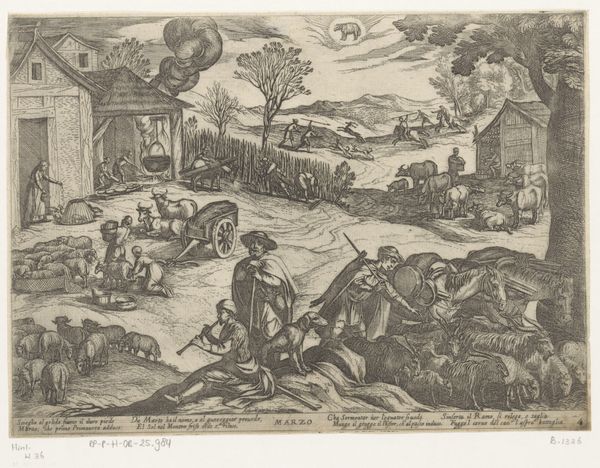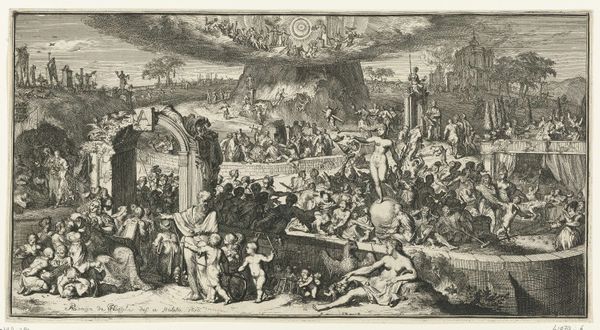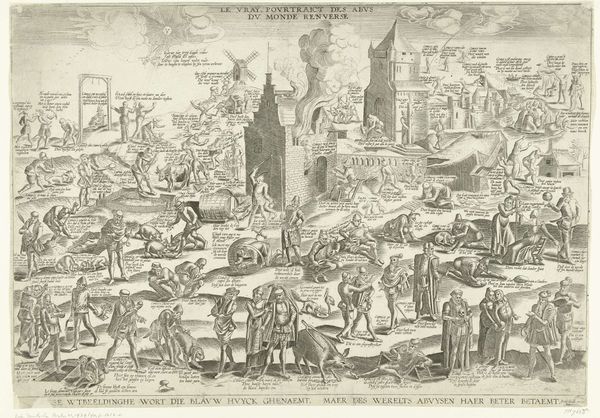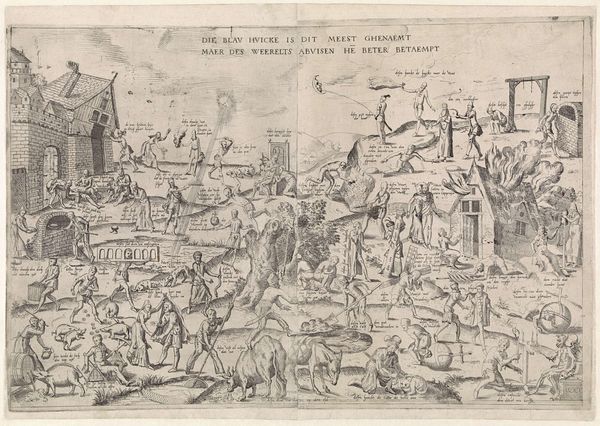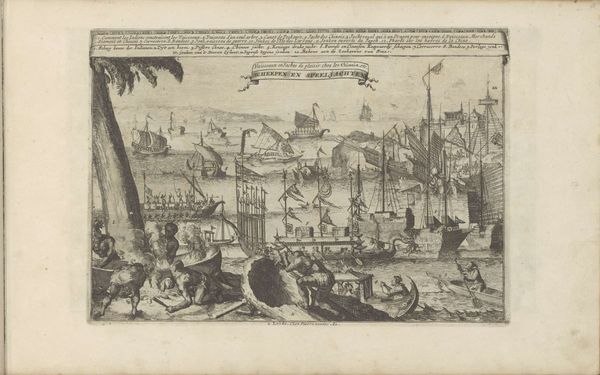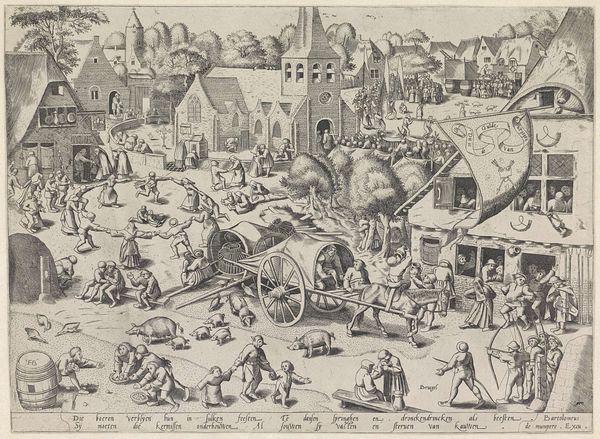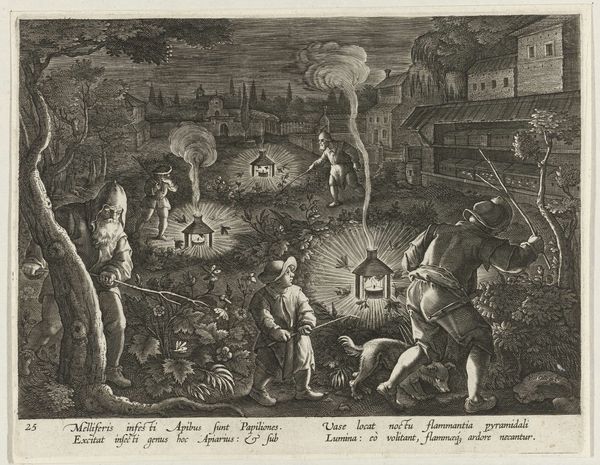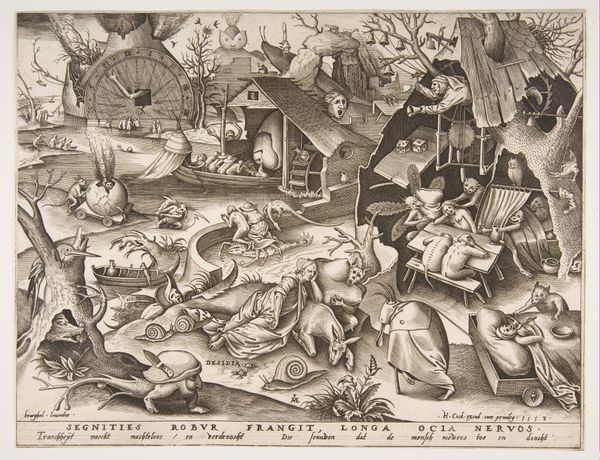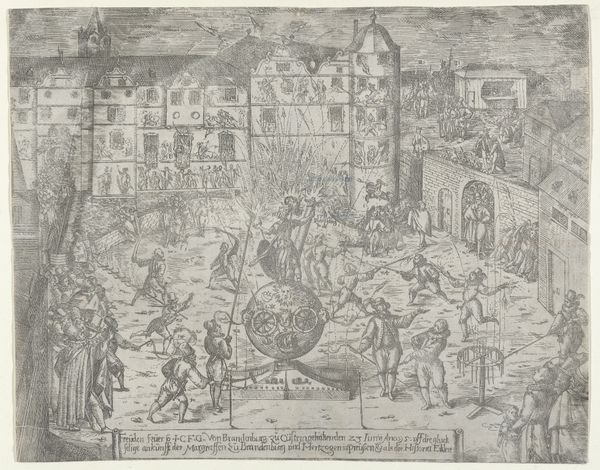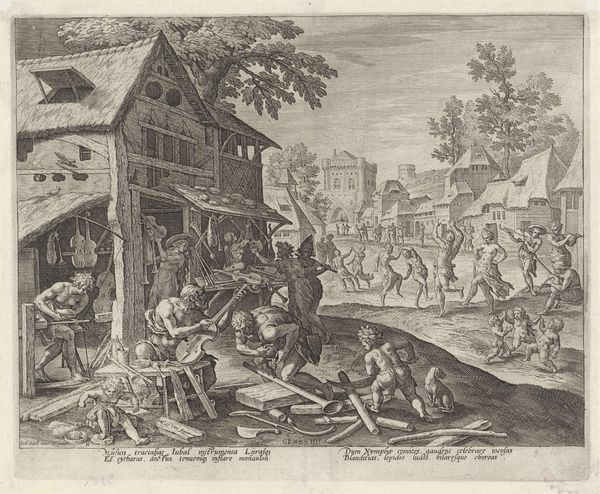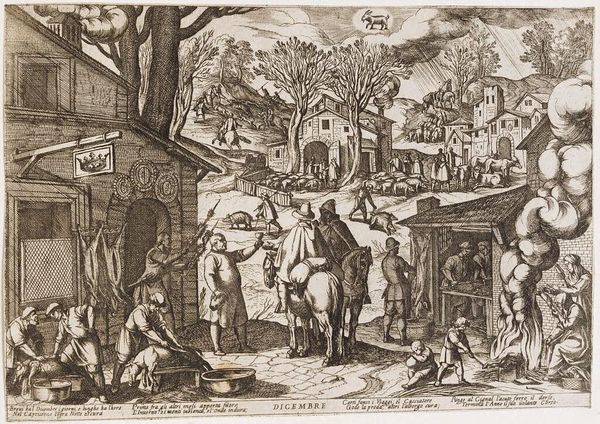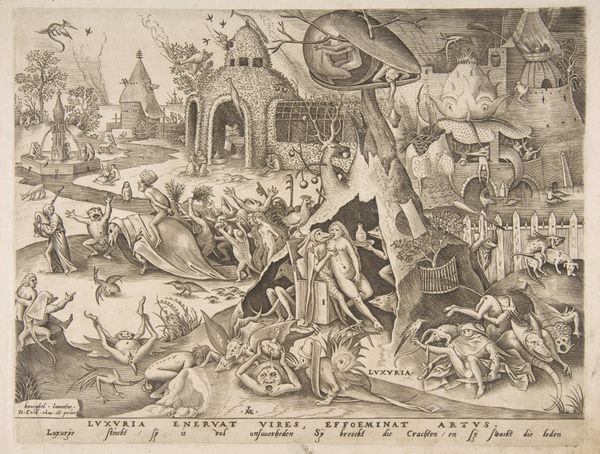
drawing, print, etching, paper, engraving
#
drawing
#
narrative-art
# print
#
etching
#
perspective
#
mannerism
#
figuration
#
paper
#
line
#
cityscape
#
history-painting
#
engraving
Dimensions: height 350 mm, width 523 mm
Copyright: Rijks Museum: Open Domain
Curator: The visual density of this engraving is extraordinary. What’s your immediate response to it? Editor: It’s chaotic. “De Blauwe Huyck,” from around 1577-1599, presents almost overwhelming social commentary. It looks almost apocalyptic in its sheer madness! Curator: Absolutely, that’s partly the point. The print, created by an anonymous artist, depicts a scene filled with diverse figures engaged in absurd or immoral behaviors. It's a study in the popular Netherlandish proverb, "To wear the blue cloak," signifying deception or being led astray. Editor: Ah, the "blue cloak"! So the chaos isn’t random—it’s symptomatic? The individual scenes, packed closely together, do portray a wide array of vices, don’t they? There's such a breakdown of social norms—you see fighting, thievery, even… bodily functions made public. It definitely resonates with contemporary anxieties about moral decline, and even the very structure of power. Curator: Precisely. Consider the history painting tradition and how prints like this participated in social critique. The "blue cloak" motif provides a lens to examine power dynamics of the time. Each numbered vignette likely references a specific social ill, offering a visual catalogue of anxieties during the late 16th century. What can be understood by situating this art piece within broader discussions concerning race, class, and gender. What does the body language tell us? Is there violence inherent in these gestures, and towards whom? Editor: I agree that analyzing individual figures, and considering how gender roles inform their participation in each vignette, would prove revealing. Looking at the print, one cannot ignore how social disorder translates into literal disruption of civic space, affecting power and authority. Consider what it must have meant to display images of moral failings during a period of immense upheaval. Curator: This really is the kind of art that keeps on giving with sustained reflection and deeper dives into its historical meaning and sociocultural implications. Editor: A fantastic demonstration of art’s critical role in understanding—and questioning—the politics of its own time.
Comments
No comments
Be the first to comment and join the conversation on the ultimate creative platform.
